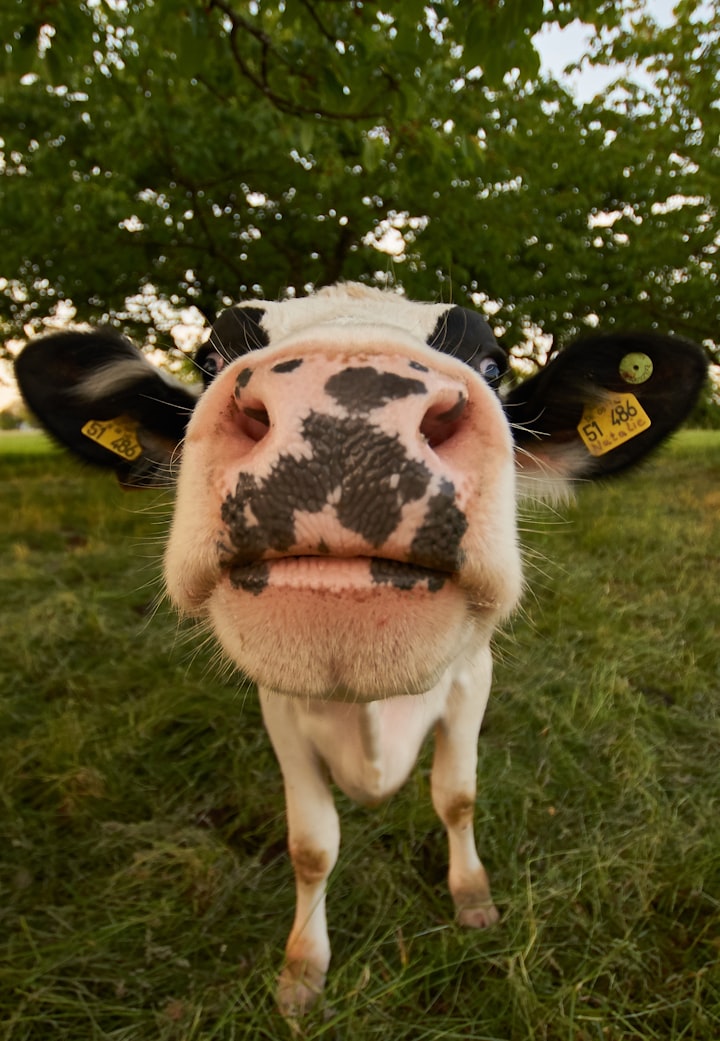Boanthropy — One of the weirdest disorders you've never heard of
Don't have a cow man

One of the rarest documented psychological disorders is called Boanthropy which is a specific type of zoanthropy, and it sufferers of this unusual disorder believe that they are a cow or an ox.
They try to live their life as a cow, even walking on all fours, eating grass, cow feed and they often stop talking, start mooing, and join herds out at pasture.
The most famous sufferer of this condition was King Nebuchadnezzar, who in the Book of Daniel “was driven from men and did eat grass as oxen”. Nebuchadnezzar was the king of the Neo-Babylonian Empire from 605BC to 562BC. According to the Bible, he conquered Judah and Jerusalem and sent the Jews into exile.
He was also credited with building the Hanging Gardens of Babylon. Nebuchadnezzar was humbled by God for boasting about his achievements. He lost his sanity, and lived like an animal for seven years, according to Daniel, chapter 4. When his sanity was later restored he praised and honored God.
Those who suffer from the very rare — but very terrifying — Boanthropy disorder believe they are cows, often going as far as to behave as such.
They do not seem to realize what they’re doing when they act like a cow, which leads researchers to believe that this odd mental disorder is brought on by dreams or even hypnotism.
The cause of boanthropy is still unknown. Many people believe it to have religious links whereas others think it is related to witchcraft and black magic. Boanthropy could possibly be an additional aspect of another psychological disease such as Schizophrenia and Bipolar Disorder when a person might experience hallucinations and believe they are no longer human.
Other possible explanations for his behavior include porphyria or general paresis or paralytic dementia caused by syphilis.
Porphyrias are a group of rare inherited blood disorders. People with these disorders have problems making a substance called heme in their bodies. Heme is made of body chemicals called porphyrin, which binds to iron. Heme is a component of hemoglobin, a protein in red blood cells that carries oxygen.
They manifest with either neurological complications, including hallucinations, depression, anxiety, and paranoia or skin problems, or occasionally both.
Psychologists prefer psychotherapy and psycho-pharmacotherapy to help an individual give up this state of delusion.
Abdurrahman Jami wrote about a depressed man with delusional metamorphosis who believed he was a cow, in his works (1397–1478, Herat) “Seven Thrones”.
A good-natured prince was affected by melancholy; he was shouting “there are few cows fatter than me in town. If the chef cooked “harissa” (goulash) of my meat, his pocket would turn into a silver treasure. Hurry, cut my throat, take me to the butchery”. From morning to evening this was his state; with his friends this was the only topic of debate. No passage of day and night passed without him mooing like a cow; “With a knife or machete kill me as I am losing weight”. This progressed to the degree he would not take food or remedies from any one. No healers could cure him, hence they sought the help of Avicenna who instructed, “go and tell him that tomorrow morning, the chief butcher will come to slaughter you knife in hand”. On the hearing the good news, the patient rejoiced and became excited. In the morning Avicenna went to the patient’s house shouting, “Where is the cow?”. The patient came out, laid down in the middle of the yard, saying “I am the cow, such and such come forward”. Abu Ali bound his hands and feet firmly, sharpened his knives and sat down. As a butcher would measure an animal, Avicenna inspected him and stroked his sides and back.
Afterwards, Avicenna said, this “cow is still undernourished; it is not wise to kill him today. Feed it for some time, never let it go hungry. When it is fat enough, I shall draw the blade, so its slaughter is not a waste”. They untied his hands and feet and put food in front of him. Everything they gave to him of food and medicine he took and ate without resistance, so, as cows he will gain weight. Eventually, the delusion of being a cow faded away.
Avicenna is regarded as one of the most significant polymaths of the Islamic world [4,5]. He wrote about 450 books and his “The Canon of Medicine”, and “The Book of Healing”, are among the most influential medical books, becoming a standard medical text which remained in use until the 17th century.
The oldest known case report of zoanthropy comes from Robert Bayfield (1630–1690) who in his “Treatise de morborum capitis” (or diseases of head published in London in 1663) gives a comprehensive description of metamorphosis into animals;
“Lycanthropy, Wolfmadness, is a disease, in which man run barking and howling about graves and fields in the night, lying hid, for the most part, all day, and will not be persuaded but that they are Wolves, or some such beasts.”

The term “cynanthropy” dates back to ancient Greece and is applied to shapeshifters who alternate between human and dog form.
A therianthrope is a being that is part human, part animal. The word combines the Greek therion, wild animal, with Anthropos, human being.
The best-known therianthropes are the animal-headed gods of ancient Egypt. Nearly all of the Ancient Egyptian Gods and Goddesses are depicted as having human bodies and the heads of animals, such as the Goddess Bastet who has the head of a cat, and Anubis who has the head of a jackal.
Conclusion; Clinical zoanthropy is a rare form of delusional metamorphosis where patients believe that they are undergoing transformation or have transformed into an animal. This phenomenon, alongside Capgras syndrome, Fregoli syndrome, reduplicative paramnesia, and inter-metamorphosis, are variants of the delusional misidentification syndrome and is often observed in patients suffering from schizophrenia-spectrum disorders, severe and psychotic depression; and respond relatively well to psychopharmacological treatments.






Comments
There are no comments for this story
Be the first to respond and start the conversation.